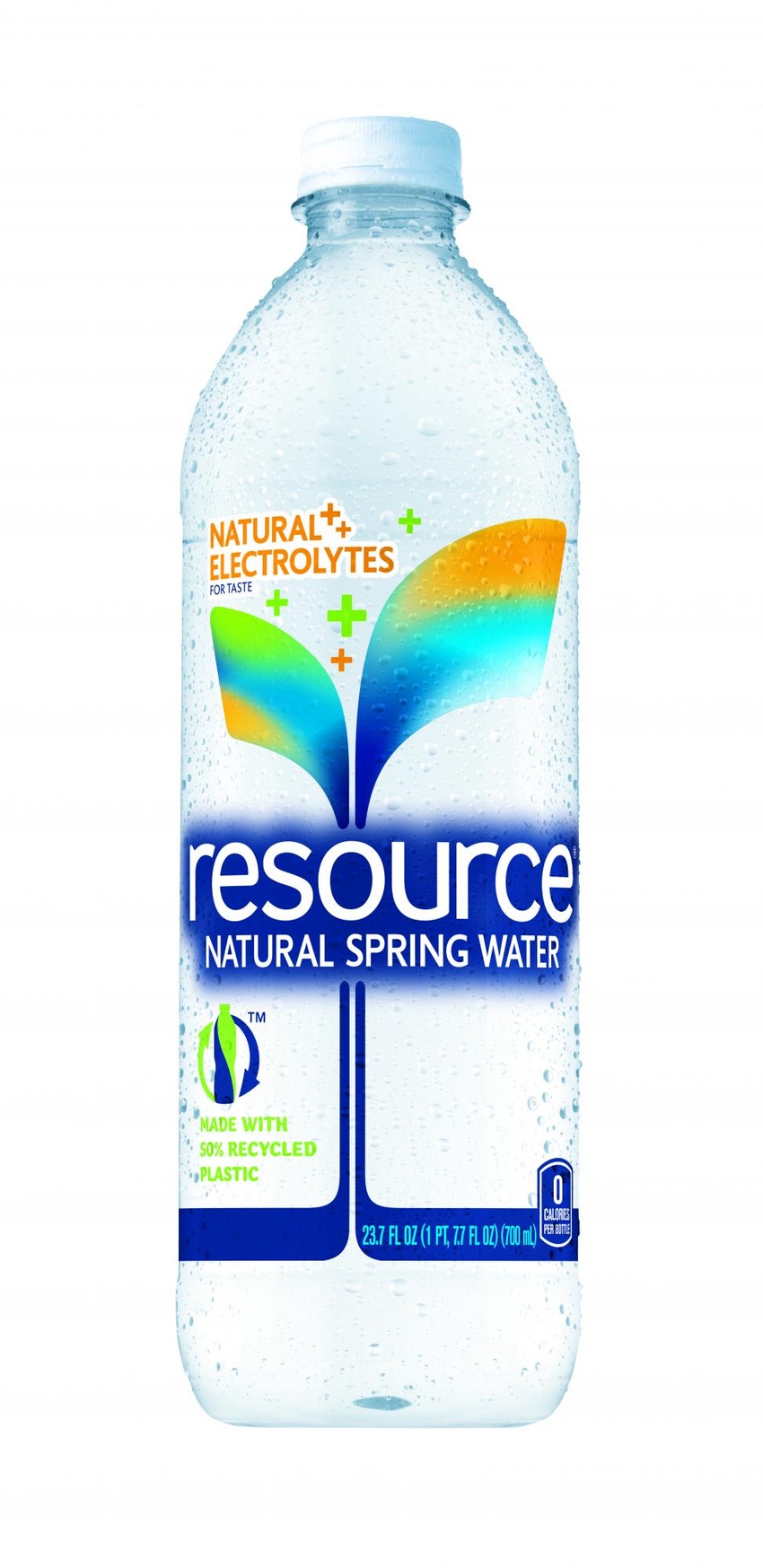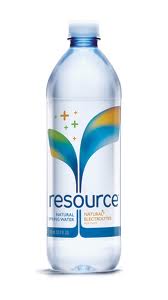Premium brand, recycled bottle for Nestlé Waters
Nestlé Waters North America's newest bottled water, Resource spring water, which is packaged with 50% recycled PET, is now available to retailers across the U.S. The bottle is offered in 700mL and 1L single-serve bottles and six-packs.The company conducted a trial launch of this product in 2012 in Southern California. Joe Wiggetman, general manager for Resource, said the bottles performed well to-date and delivered the margins that retailers were looking for in the bottled water category.
January 29, 2013

Nestlé Waters North America's newest bottled water, Resource spring water, which is packaged with 50% recycled PET, is now available to retailers across the U.S. The bottle is offered in 700mL and 1L single-serve bottles and six-packs.
The company conducted a trial launch of this product in 2012 in Southern California. Joe Wiggetman, general manager for Resource, said the bottles performed well to-date and delivered the margins that retailers were looking for in the bottled water category.
While Nestlé Waters North America is estimated to have about a 41% share of the PET bottled water category and seven of the top 10 bottled water brands in the U.S., the company didn't have a presence in the premium bottled water category.
 Generally speaking, bottled water is typically sold at lower price points, where premium bottled water is positioned as a higher-end product. The key leading premium brands worldwide include Evian, Perrier, San Pellegrino, Vittel and Volvic, according to specialist consultancy Zenith International.
Generally speaking, bottled water is typically sold at lower price points, where premium bottled water is positioned as a higher-end product. The key leading premium brands worldwide include Evian, Perrier, San Pellegrino, Vittel and Volvic, according to specialist consultancy Zenith International.
Larry Cooper, senior marketing manager for Resource, told PlasticsToday the components that make Resource stand out include 100% natural spring water, naturally occurring electrolytes that produce a "crisp, clean" taste, and recyclable bottles that are made of 50% rPET. As a result of those three areas, Cooper said they believe the product is "unmatched" in the marketplace right now.
The decision to use rPET material was made over two years ago by the company.
"The reusing of plastic, where we give them another life, is an important goal of ours," Wiggetman said. "Recycled plastic is very symbolic of an environmental and sustainable message."
While there is a clear environmental case to be made for the usage of recycled content, there's also a business one. According to a Nestle Alive Community Panel held in October 2012, about 65% of consumers actively look for and purchase bottles made from recyclable materials.
Wiggetman said he's seen studies that have shown packages made with 75% and 100% recycled materials are very well received with consumers.
"Consumers have an eye for it and I think it does add to purchase intent," he said.
Cooper said the eventual goal is to use 100% rPET in the bottle.
"But that will certainly be based on improvements in the recycling rate as well as obtaining true quality PET," he said. "We will take any steps further that are needed to get to that goal of 100% sometime in the future."
U.S. demand for post-consumer recycled plastic is forecast to rise 6.5% per year to 3.5 billion lb in 2016, according to the Freedonia Group. Packaging will continue to be the leading market for recycled plastic in 2016. Bottles will remain the leading source of plastic for recycling, accounting for over half of all plastic collected in 2016.
Still, the overall rate of plastic recycling in the U.S. is projected to remain relatively low, less than 7% of total plastic demand in 2016, Freedonia Group stated.
PET and HDPE were the two leading resins used in recycled plastic products in 2011, accounting for more than 70% of demand. PET will see above average gains in demand, fueled by rising recycled content in beverage bottles and thermoformed containers.
About the Author(s)
You May Also Like


